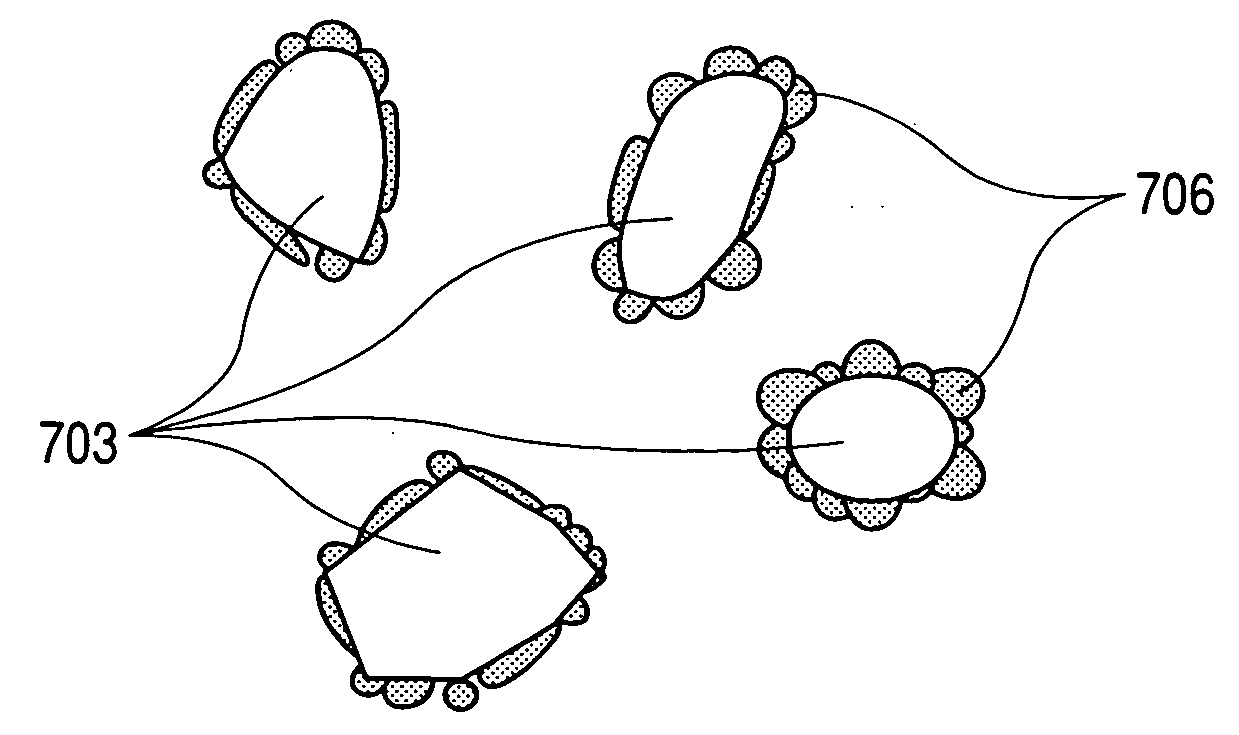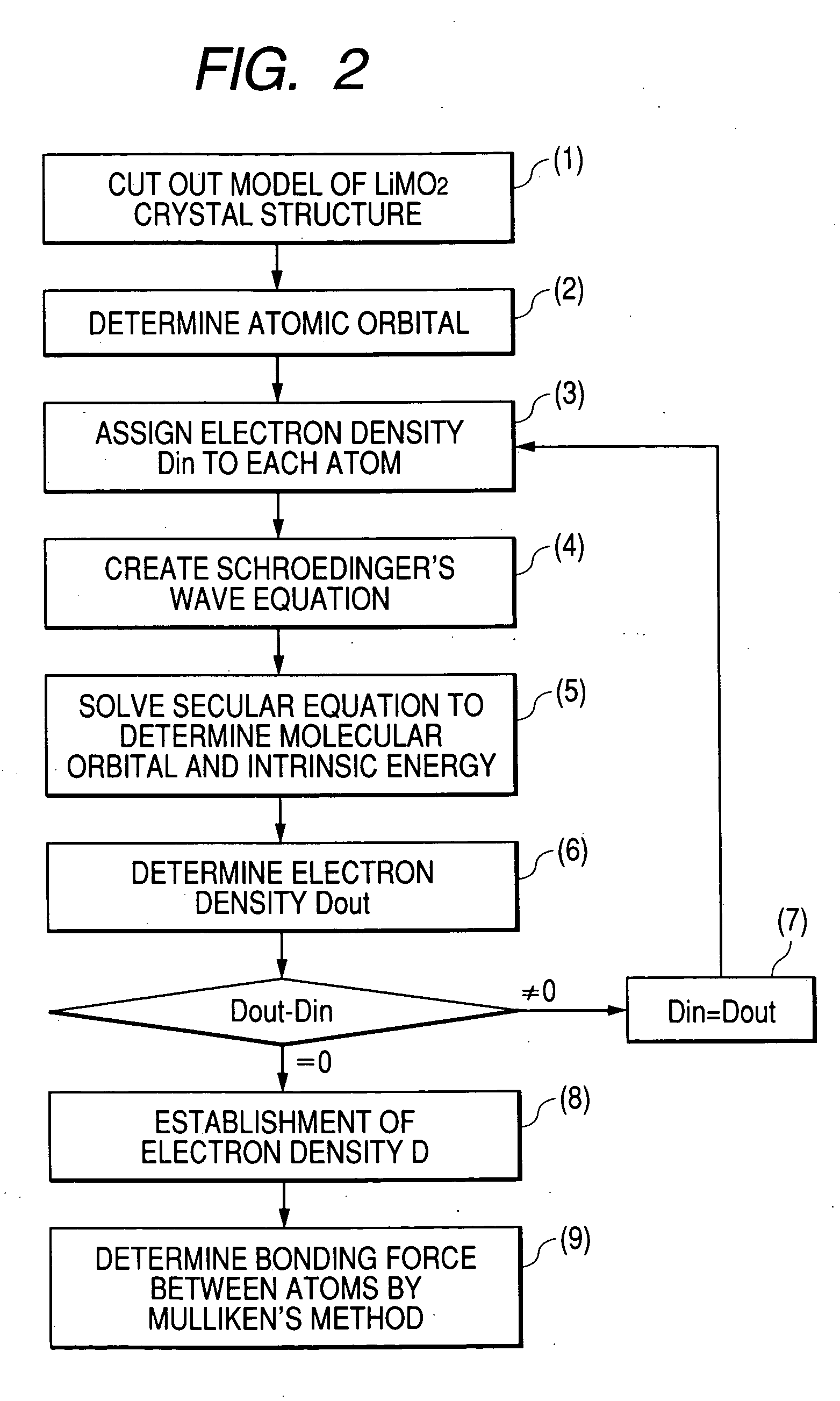Electrode material for lithium secondary battery, electrode structure and lithium secondary battery
a lithium secondary battery and electrode structure technology, applied in nickel compounds, cell components, instruments, etc., can solve the problems of difficult to new build a thermal power plant, source of air pollutants, and difficult to meet the requirements of new construction, and achieve excellent characteristics and reduce capacity degradation
- Summary
- Abstract
- Description
- Claims
- Application Information
AI Technical Summary
Benefits of technology
Problems solved by technology
Method used
Image
Examples
example 1
[0119]The lithium secondary battery having the configuration shown in FIG. 8 was fabricated as follows.
1. Preparation of Electrode Material (Positive Electrode Active Material)
(1) Synthesis of LiNi0.975Ti0.025O2:
[0120]Lithium citrate, nickel nitrate and tetraethoxytitanium (Ti(OC2H5)4) were weighed out in such a way that the relations Li / (N+Ti)=1.06 (atomic ratio) and Ni / Ti=97.5 / 2.5 (atomic ratio) were satisfied; then, the lithium citrate and nickel nitrate were dissolved in a 20 wt % aqueous solution of citric acid; while the aqueous solution was heated to 60° C. and being stirred, the tetraethoxytitanium (Ti(OC2H5)4) was added to the aqueous solution, and thereafter the aqueous solution thus obtained was spray-dried with the aid of a spray dryer to obtain a precursor. The thus obtained precursor was calcined at 750° C. for 12 hours in an oxygen atmosphere (supplied at a rate of 3 L / min) to synthesize LiNi0.975Ti0.025O2 for forming the central portion.
(2) Formation of LiNi0.9V0.1O2...
example 2
[0130]A lithium secondary battery was fabricated and the performance thereof was evaluated by following the same procedure as in Example 1 with the exception that the electrode material (the positive electrode active material) was prepared as described below. The evaluation results obtained are shown in Table 1.
[Preparation of Electrode Material (Positive Electrode Active Material)]
[0131]In the same manner as that in 1-(1) of Example 1, LiNi0.975Ti0.025O2 for forming the central portion was synthesized. Then, there was formed LiNi0.9Si0.1O2 as the surface portion covering the LiNi0.975Ti0.025O2 particle (hereinafter referred to as “central portion particle”). More specifically, lithium nitrate, nickel nitrate and tetraethoxysilane (Si(OC2H5)4) were dissolved in ethanol in such a way that the relations Li / (Ni+Si)=1.06 (atomic ratio) and Ni / Si=90 / 10 (atomic ratio) were satisfied; the central portion particles were dispersed in the ethanol solution in such a way that the relation (Ni+S...
example 3
[0132]A lithium secondary battery was fabricated and the performance thereof was evaluated by following the same procedure as in Example 1 with the exception that the electrode material (the positive electrode active material) was prepared as described below. The evaluation results obtained are shown in Table 1.
[Preparation of Electrode Material (Positive Electrode Active Material)]
(1) Synthesis of LiNi0.9Mn0.1O2
[0133]Lithium citrate, nickel nitrate and manganese nitrate were weighed out in such a way that the relations Li / (N+Mn)=1.06 (atomic ratio) and Ni / Mn=90 / 10 (atomic ratio) were satisfied; then, these salts were dissolved in a 20 wt % aqueous solution of citric acid; the aqueous solution was spray-dried with the aid of a spray dryer and thus the precursor was obtained. The obtained precursor was calcined at 750° C. for 12 hours in an atmosphere of oxygen (supplied at a rate of 3 L / min), and thus LiNi0.9Mn0.1O2 forming the central portion was synthesized.
(2) Formation of LiNi0...
PUM
| Property | Measurement | Unit |
|---|---|---|
| average particle diameter | aaaaa | aaaaa |
| thickness | aaaaa | aaaaa |
| particle diameter | aaaaa | aaaaa |
Abstract
Description
Claims
Application Information
 Login to View More
Login to View More - R&D
- Intellectual Property
- Life Sciences
- Materials
- Tech Scout
- Unparalleled Data Quality
- Higher Quality Content
- 60% Fewer Hallucinations
Browse by: Latest US Patents, China's latest patents, Technical Efficacy Thesaurus, Application Domain, Technology Topic, Popular Technical Reports.
© 2025 PatSnap. All rights reserved.Legal|Privacy policy|Modern Slavery Act Transparency Statement|Sitemap|About US| Contact US: help@patsnap.com



